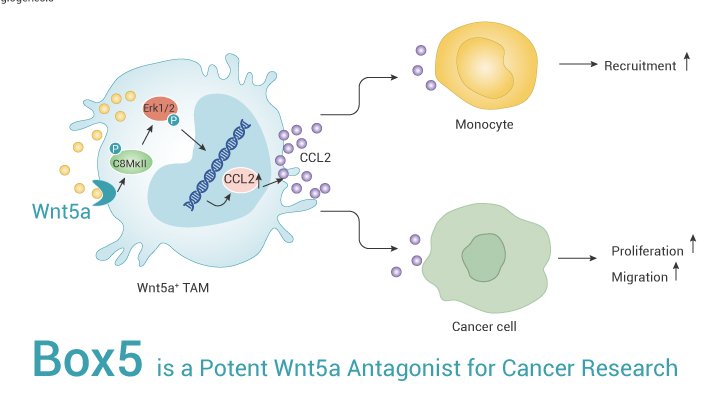Wnt5a (Wnt Family Member 5A) is a signaling molecule and is implicated in many different types of cancers. Importantly, Wnt5a increases intracellular Ca2+ levels and enables the activation of Ca2+-regulated proteins, such as protein kinase C (PKC) in a context-dependent manner, giving rise to the model of a non-canonical Wnt/Ca2+ signaling pathway. Particularly, Wnt5a promotes cancer progression. For example, Wnt5a-knockout mice (Wnt5a-/-) died shortly after birth and displayed a plethora of abnormalities, making a loss of Wnt5a lethal. While, Exogenous Wnt5a stimulation of A2058 cells increased adhesion, migration, and invasion, all crucial components of tumor metastasis.
Malignant melanoma is a particularly aggressive cancer. Moreover, research shows that Wnt5a increases melanoma cell invasiveness and metastasis. In addition, Wnt5a signaling has the potential to block tumor progression. So, it is important to find a Wnt5a inhibitor to block tumor progression.
In this article, we will introduce a potent Wnt5a antagonist, Box5.

Box5 is a peptide with the sequence of Met-Asp-Gly-Cys-Glu-Leu; 0.766 kDa. Besides, Box5 (0-500 µM; 48 h) inhibits Wnt5a-mediated A2058 cell migration (wound-healing analysis) in a dose-dependent manner. Moreover, Box5 (0-500 µM; 48 h) also inhibits the basal migration and invasion of Wnt5a-expressing HTB63 melanoma cells. In addition, Box5 (100 µM; 40 min) inhibits Wnt5a-mediated melanoma cell invasion through matrigel. Meanwhile, Box5 (100 µM; overnight) blocks rWnt5a-induced (0.1 μg/mL) Ca2+ release. Moreover, Box5 (100 µM; overnight) inhibits myristoylated alanine-rich C kinase substrate (MARCKS) phosphorylation after 45 min of rWnt5a stimulation (0.2 μg/mL).
All in all, Box5 is a potent, selective Wnt5a antagonist and has the potential for the research of melanoma.
Reference:
[1] Jenei V, et al. Proc Natl Acad Sci U S A. 2009 Nov 17;106(46):19473-8.